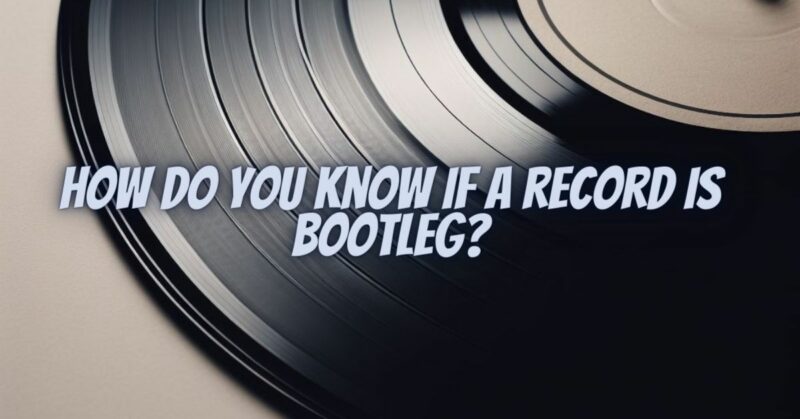Bootleg records are unauthorized copies of official releases. They are often made without the permission of the artist or record label, and they are often of inferior quality. Counterfeit records are also unauthorized copies of official releases, but they are designed to look like the real thing.
There are a number of ways to tell if a record is bootleg or counterfeit. Here are some of the most common signs:
- Price: Bootleg and counterfeit records are often sold at a lower price than official releases. This is because bootleg and counterfeiters are able to cut costs by using inferior materials and manufacturing processes.
- Quality: Bootleg and counterfeit records are often of inferior quality. The sound quality may be poor, and the vinyl itself may be warped or damaged.
- Cover: The cover of a bootleg or counterfeit record may be of lower quality than the cover of an official release. The printing may be blurry or the colors may be off.
- Label: The label on a bootleg or counterfeit record may be of lower quality than the label on an official release. The printing may be blurry or the logo may be inaccurate.
- Matrix number: The matrix number is a unique code that is etched into the dead wax of the vinyl. Bootleg and counterfeit records may not have a matrix number, or the matrix number may be incorrect.
Here are some additional tips for spotting bootleg and counterfeit records:
- Be wary of sellers who are selling rare or out-of-print records at a low price.
- Inspect the record carefully before you buy it. Look for any signs of poor quality, such as warped vinyl or blurry printing.
- Compare the cover and label to the cover and label of a known official release. If there are any discrepancies, the record is likely bootleg or counterfeit.
- Check the matrix number against a database of official matrix numbers.
If you are unsure whether or not a record is bootleg or counterfeit, it is best to err on the side of caution and avoid buying it. There are many reputable retailers where you can purchase official releases.
Here are some examples of bootleg and counterfeit records:
- A bootleg record of a live recording of a popular band may be sold as an official release.
- A counterfeit record of a rare or out-of-print record may be sold at a high price.
- A counterfeit record of a new release may be sold before the official release date.
If you spot bootleg or counterfeit records being sold, you can report it to the artist or record label. You can also report it to the authorities.
Buying bootleg or counterfeit records is not illegal in most cases, but it is not recommended. Bootleg and counterfeit records are often of inferior quality, and buying them supports a criminal enterprise.


